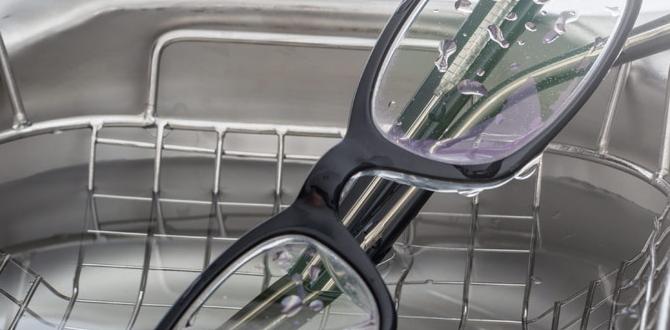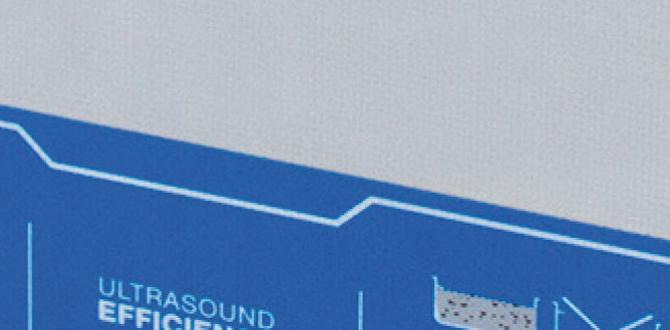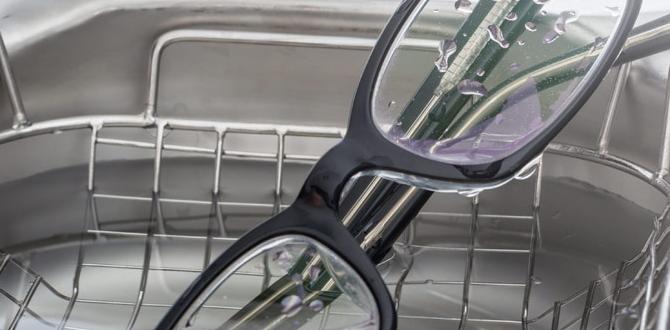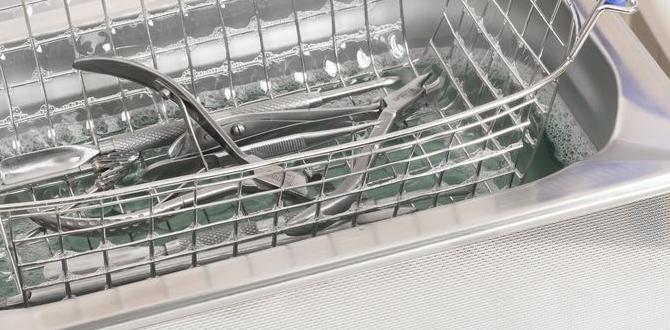Are you struggling to clean your car parts effectively? Traditional cleaning methods often fall short when it comes to removing stubborn dirt, grease, and contaminants. This is where an ultrasonic cleaner comes in. By utilizing high-frequency sound waves and powerful cleaning solutions, an ultrasonic cleaner can efficiently clean even the most intricate car parts without causing any damage. In this article, I will walk you through the benefits of using an ultrasonic cleaner for car parts, how to choose the right one, steps to clean car parts using this technology, maintenance tips, and safety precautions to ensure a successful and safe cleaning process.
1. Benefits of Using an Ultrasonic Cleaner for Car Parts

When it comes to cleaning car parts, an ultrasonic cleaner offers several advantages over traditional methods:
- Efficiency: Ultrasonic cleaners use high-frequency sound waves to create millions of microscopic bubbles that implode, generating powerful cleaning action. This cleaning method reaches every nook and cranny, leaving no residue behind.
- Gentle Cleaning: Ultrasonic cleaning is a non-abrasive process, making it safe for delicate and intricate car parts. It removes dirt, grease, and contaminants without causing any damage or altering the surface finish.
- Time-Saving: Compared to manual scrubbing or soaking, ultrasonic cleaning significantly reduces cleaning time. It can clean multiple parts simultaneously, increasing productivity and efficiency.
- Effective Removal of Contaminants: Ultrasonic cleaners can remove a wide range of contaminants, including oil, grease, carbon deposits, rust, and even paint. This makes it an ideal choice for cleaning various car parts such as valves, carburetors, pistons, and injectors.
- Environmentally Friendly: Ultrasonic cleaning reduces the need for harsh chemicals and solvents. The cleaning solution used in ultrasonic cleaners is water-based and biodegradable, making it an eco-friendly option.
2. How to Choose the Right Ultrasonic Cleaner for Car Parts

With a variety of ultrasonic cleaners available in the market, choosing the right one for your car parts can be a daunting task. Consider the following factors to make an informed decision:
- Tank Size: The size of the cleaning tank should be suitable for the car parts you intend to clean. Ensure that the tank is large enough to accommodate the parts without overcrowding.
- Frequency: Ultrasonic cleaners operate at different frequencies. Lower frequencies are effective for heavy-duty cleaning, while higher frequencies are suitable for delicate parts. Choose a cleaner with an adjustable frequency option for versatility.
- Timer and Heating Options: Look for an ultrasonic cleaner that allows you to adjust the cleaning time and temperature. This enables you to customize the cleaning process based on the degree of contamination.
- Power Output: Higher power output ensures efficient cleaning. Consider the wattage of the ultrasonic cleaner to ensure it meets your cleaning requirements.
- Additional Features: Some ultrasonic cleaners come with features like degassing, sweep mode, and digital displays. Assess your needs and choose a cleaner with the necessary features that will enhance the cleaning process.
3. Steps to Clean Car Parts Using an Ultrasonic Cleaner

Now, let’s dive into a step-by-step guide on how to clean car parts using an ultrasonic cleaner:
- Prepare the Cleaning Solution: Fill the ultrasonic cleaner tank with a suitable cleaning solution. Refer to the manufacturer’s instructions or consult with an expert to choose the right cleaning solution for the specific car parts you are cleaning.
- Disassemble the Car Parts: If possible, disassemble the car parts into individual components. This will allow better access to the surfaces and ensure thorough cleaning.
- Place the Parts in the Ultrasonic Cleaner: Arrange the disassembled car parts in the cleaning basket or tray provided with the ultrasonic cleaner. Avoid overcrowding the tank to ensure proper cleaning.
- Set the Cleaning Parameters: Adjust the desired cleaning time, temperature, and frequency based on the manufacturer’s recommendations and the level of contamination.
- Activate the Ultrasonic Cleaner: Switch on the ultrasonic cleaner and let it run for the set cleaning time. The sound waves and cleaning solution will start working together to remove dirt and contaminants from the car parts.
- Rinse and Dry the Cleaned Parts: After the cleaning cycle is complete, remove the car parts from the ultrasonic cleaner and rinse them thoroughly with water. Dry the parts using a soft cloth or compressed air to remove any remaining moisture.
- Inspect and Reassemble the Parts: Examine the cleaned car parts for any signs of residue or contaminants. If necessary, repeat the cleaning process or manually clean the specific areas. Once satisfied, reassemble the parts to their original form.
4. Maintenance Tips for an Ultrasonic Cleaner for Car Parts

Proper maintenance of your ultrasonic cleaner is essential to ensure its longevity and optimal performance:
- Clean the Tank Regularly: Empty and clean the tank after every use to remove any leftover cleaning solution, debris, or residue. Follow the manufacturer’s guidelines for tank maintenance.
- Change the Solution: Periodically change the cleaning solution to maintain its effectiveness. Contaminated solutions may not provide the desired cleaning results.
- Inspect and Clean the Transducers: The transducers are responsible for producing the ultrasonic waves. Regularly inspect and clean them to remove any buildup or debris that may impact the cleaning performance.
- Store Properly: When not in use, store the ultrasonic cleaner in a clean and dry area. Keep it away from moisture, dust, and direct sunlight.
5. Safety Precautions When Using an Ultrasonic Cleaner for Car Parts

While ultrasonic cleaners are generally safe to use, it’s essential to take some precautions to protect yourself and the equipment:
- Protective Gear: Wear safety goggles and gloves to safeguard your eyes and hands from cleaning solutions and potential splashes.
- Ventilation: Operate the ultrasonic cleaner in a well-ventilated area to prevent the accumulation of fumes.
- Temperature Control: Avoid using the ultrasonic cleaner at excessively high temperatures, as it may cause damage to the cleaner and the car parts being cleaned.
- Electrical Safety: Ensure that the ultrasonic cleaner is properly grounded and connected to a reliable power source to avoid electrical hazards.
Conclusion
An ultrasonic cleaner is a valuable tool for effectively cleaning car parts. Its superior cleaning ability, gentle treatment of delicate components, time-saving nature, and eco-friendly features make it a wise investment. By following the steps mentioned in this article, choosing the right cleaner for your needs, and conducting regular maintenance, you can ensure optimal cleaning results and prolong the lifespan of your ultrasonic cleaner. So why struggle with manual cleaning methods when you can harness the power of ultrasonic technology to achieve pristine car parts effortlessly?
FAQs
1. Can I reuse the cleaning solution in my ultrasonic cleaner?
It is recommended to periodically change the cleaning solution to maintain its effectiveness. Contaminated solutions may not provide the desired cleaning results.
2. Can ultrasonic cleaning damage delicate car parts?
No, ultrasonic cleaning is a gentle process that is safe for delicate and intricate car parts. It removes dirt and contaminants without causing any damage or altering the surface finish.
3. How often should I clean my ultrasonic cleaner?
You should clean the ultrasonic cleaner tank after every use to remove any leftover cleaning solution, debris, or residue. Additionally, regular maintenance of the transducers is recommended to ensure optimal cleaning performance.
4. Can I clean multiple car parts simultaneously in an ultrasonic cleaner?
Yes, ultrasonic cleaners are designed to clean multiple car parts simultaneously, provided that the tank size is suitable and the parts are not overcrowded.
5. Are there any precautions I should take before using an ultrasonic cleaner?
Yes, it is important to wear protective gear such as safety goggles and gloves and operate the ultrasonic cleaner in a well-ventilated area. Additionally, ensure proper grounding and electrical safety while using the ultrasonic cleaner.